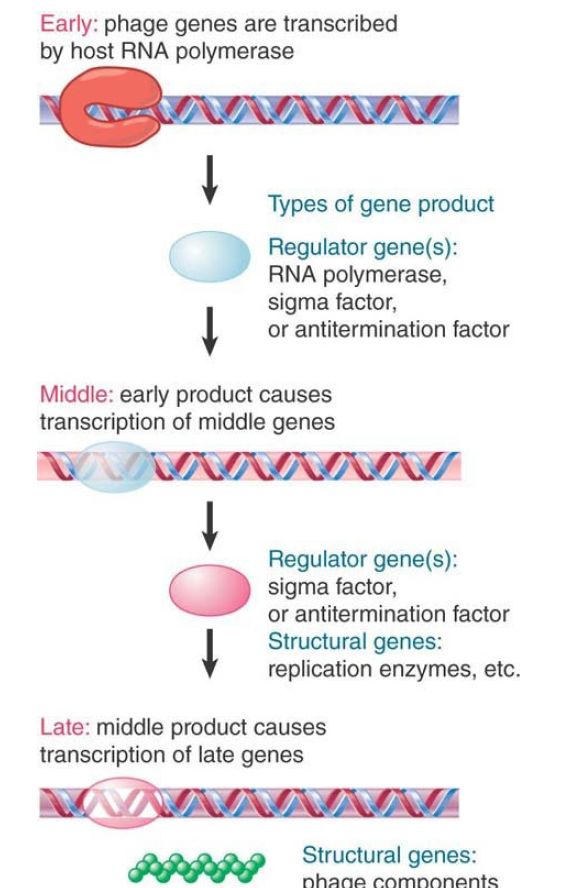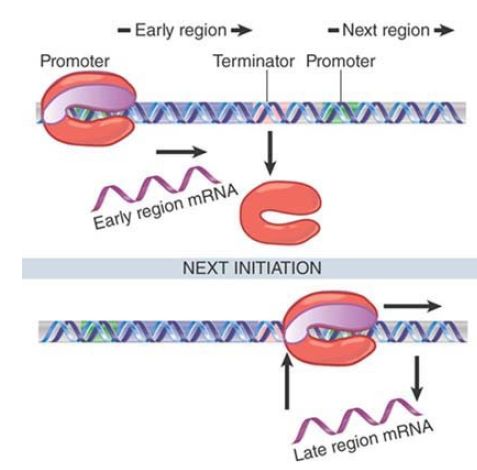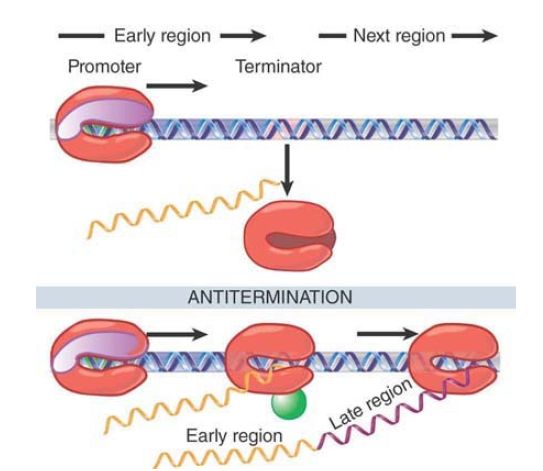

النبات

مواضيع عامة في علم النبات

الجذور - السيقان - الأوراق

النباتات الوعائية واللاوعائية

البذور (مغطاة البذور - عاريات البذور)

الطحالب

النباتات الطبية


الحيوان

مواضيع عامة في علم الحيوان

علم التشريح

التنوع الإحيائي

البايلوجيا الخلوية


الأحياء المجهرية

البكتيريا

الفطريات

الطفيليات

الفايروسات


علم الأمراض

الاورام

الامراض الوراثية

الامراض المناعية

الامراض المدارية

اضطرابات الدورة الدموية

مواضيع عامة في علم الامراض

الحشرات


التقانة الإحيائية

مواضيع عامة في التقانة الإحيائية


التقنية الحيوية المكروبية

التقنية الحيوية والميكروبات

الفعاليات الحيوية

وراثة الاحياء المجهرية

تصنيف الاحياء المجهرية

الاحياء المجهرية في الطبيعة

أيض الاجهاد

التقنية الحيوية والبيئة

التقنية الحيوية والطب

التقنية الحيوية والزراعة

التقنية الحيوية والصناعة

التقنية الحيوية والطاقة

البحار والطحالب الصغيرة

عزل البروتين

هندسة الجينات


التقنية الحياتية النانوية

مفاهيم التقنية الحيوية النانوية

التراكيب النانوية والمجاهر المستخدمة في رؤيتها

تصنيع وتخليق المواد النانوية

تطبيقات التقنية النانوية والحيوية النانوية

الرقائق والمتحسسات الحيوية

المصفوفات المجهرية وحاسوب الدنا

اللقاحات

البيئة والتلوث


علم الأجنة

اعضاء التكاثر وتشكل الاعراس

الاخصاب

التشطر

العصيبة وتشكل الجسيدات

تشكل اللواحق الجنينية

تكون المعيدة وظهور الطبقات الجنينية

مقدمة لعلم الاجنة


الأحياء الجزيئي

مواضيع عامة في الاحياء الجزيئي


علم وظائف الأعضاء


الغدد

مواضيع عامة في الغدد

الغدد الصم و هرموناتها

الجسم تحت السريري

الغدة النخامية

الغدة الكظرية

الغدة التناسلية

الغدة الدرقية والجار الدرقية

الغدة البنكرياسية

الغدة الصنوبرية

مواضيع عامة في علم وظائف الاعضاء

الخلية الحيوانية

الجهاز العصبي

أعضاء الحس

الجهاز العضلي

السوائل الجسمية

الجهاز الدوري والليمف

الجهاز التنفسي

الجهاز الهضمي

الجهاز البولي


المضادات الميكروبية

مواضيع عامة في المضادات الميكروبية

مضادات البكتيريا

مضادات الفطريات

مضادات الطفيليات

مضادات الفايروسات

علم الخلية

الوراثة

الأحياء العامة

المناعة

التحليلات المرضية

الكيمياء الحيوية

مواضيع متنوعة أخرى

الانزيمات
Lytic Development Is Controlled by a Cascade
المؤلف:
JOCELYN E. KREBS, ELLIOTT S. GOLDSTEIN and STEPHEN T. KILPATRICK
المصدر:
LEWIN’S GENES XII
الجزء والصفحة:
6-6-2021
2398
Lytic Development Is Controlled by a Cascade
KEY CONCEPTS
- The early genes transcribed by host RNA polymerase following infection include, or comprise, regulators required for expression of the middle set of phage genes.
- The middle group of genes includes regulators to transcribe the late genes.
- This results in the ordered expression of groups of genes during phage infection.
The organization of the phage genetic map often reflects the sequence of lytic development. The concept of the operon is taken to somewhat of an extreme, in which the genes coding for proteins with related functions are clustered to allow their control with the maximum economy. This allows the pathway of lytic development to be controlled with a small number of regulatory switches. The lytic cycle is under positive control, so that each group of phage genes can be expressed only when an appropriate signal is given. FIGURE 1 shows that the regulatory genes function in a cascade, in which a gene expressed at one stage is necessary for synthesis of the genes that are expressed at the next stage.

FIGURE 1. Phage lytic development proceeds by a regulatory cascade, in which a gene product at each stage is needed for expression of the genes at the next stage.
The early part of the first stage of gene expression necessarily relies on the transcription apparatus of the host cell. In general, only a few genes are expressed at this time. Their promoters are indistinguishable from those of host genes. The name of this class of genes depends on the phage. In most cases, they are known as the early genes. In phage lambda, they are given the evocative description of immediate early genes. Irrespective of the name, they constitute only a preliminary set of genes, representing just the initial part of the early period. Sometimes they are exclusively occupied with the transition to the next period. In all cases, one of these genes always encodes a protein, a gene regulator that is necessary for transcription of the next class of genes.
This next class of genes in the early stage is known variously as the delayed early or middle gene group. Its expression typically starts as soon as the regulator protein coded by the early gene(s) is available. Depending on the nature of the control circuit, the initial set of early genes may or may not continue to be expressed at this stage. If control is at transcription initiation, the two events are independent (as shown in FIGURE 2), and early genes can be switched off when middle genes are transcribed. If control is at transcription termination, the early genes must continue to be expressed, as shown in FIGURE 3. Often, the expression of host genes is reduced. Together the two sets of early genes account for all necessary phage functions except those needed to assemble the particle coat itself and to lyse the cell.

FIGURE 2 Control at initiation utilizes independent transcription units, each with its own promoter and terminator, which produce independent mRNAs. The transcription units need not be located near one another.

FIGURE 3. Control at termination requires adjacent units so that transcription can read from the first gene into the next gene. This produces a single mRNA that contains both sets of genes.
When the replication of phage DNA begins, it is time for the late genes to be expressed. Their transcription at this stage usually is arranged by embedding an additional regulator gene within the previous (delayed early or middle) set of genes. This regulator may be another antitermination factor (as in lambda) or it may be another sigma factor (such as the Bacillus subtilis factor).
A lytic infection often falls into the stages just described, beginning with the early genes transcribed by host RNA polymerase (sometimes the regulators are the only products at this stage). This stage is followed by those genes transcribed under the direction of the regulator produced in the first stage (most of these genes encode enzymes needed for replication of phage DNA). The final stage consists of genes for phage components, which are transcribed under the direction of a regulator synthesized in the second stage.
The use of these successive controls, in which each set of genes contains a regulator that is necessary for expression of the next set, creates a cascade in which groups of genes are turned on (and sometimes off) at particular times. The means used to construct each phage cascade are different, but the results are similar.
 الاكثر قراءة في مواضيع عامة في الاحياء الجزيئي
الاكثر قراءة في مواضيع عامة في الاحياء الجزيئي
 اخر الاخبار
اخر الاخبار
اخبار العتبة العباسية المقدسة

الآخبار الصحية















 قسم الشؤون الفكرية يصدر كتاباً يوثق تاريخ السدانة في العتبة العباسية المقدسة
قسم الشؤون الفكرية يصدر كتاباً يوثق تاريخ السدانة في العتبة العباسية المقدسة "المهمة".. إصدار قصصي يوثّق القصص الفائزة في مسابقة فتوى الدفاع المقدسة للقصة القصيرة
"المهمة".. إصدار قصصي يوثّق القصص الفائزة في مسابقة فتوى الدفاع المقدسة للقصة القصيرة (نوافذ).. إصدار أدبي يوثق القصص الفائزة في مسابقة الإمام العسكري (عليه السلام)
(نوافذ).. إصدار أدبي يوثق القصص الفائزة في مسابقة الإمام العسكري (عليه السلام)


















